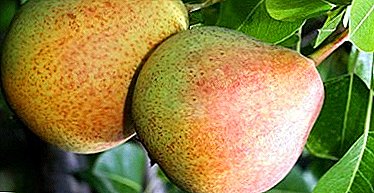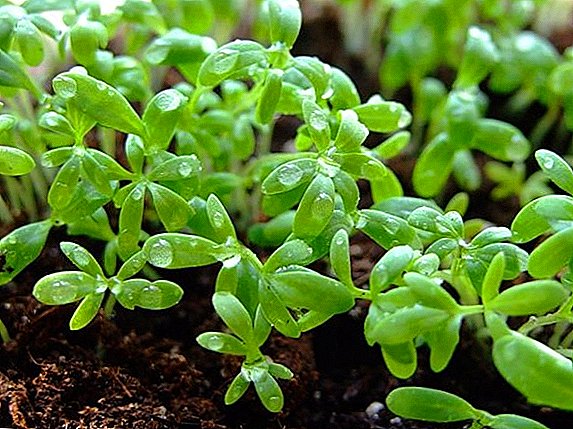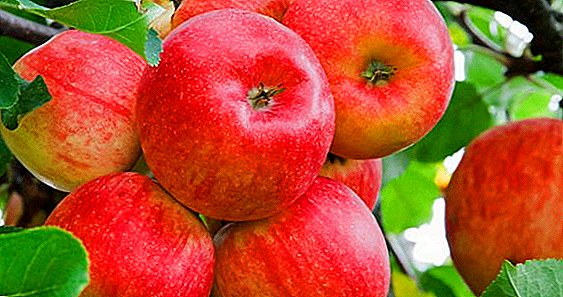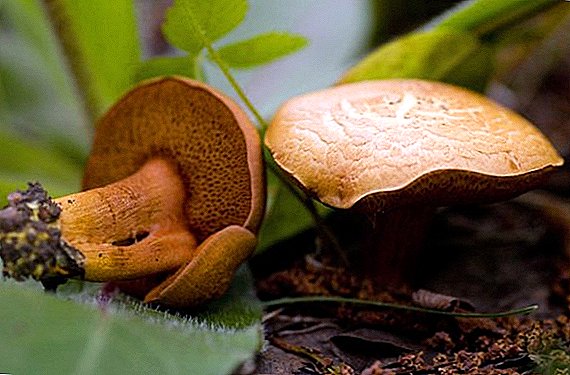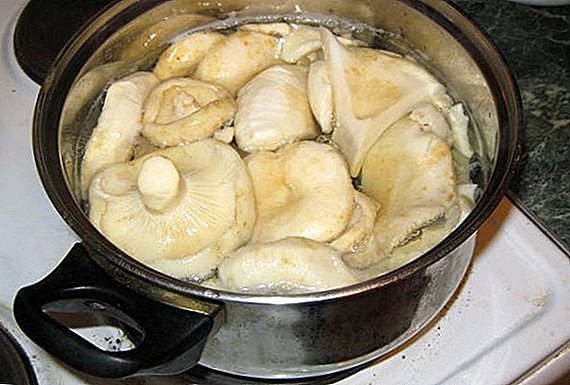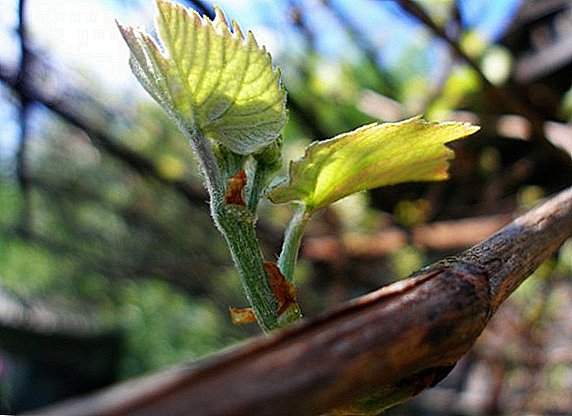 Grapes are a garden crop, growing mainly in warm climates. But some grape varieties successfully take root in mid-latitude and even in the north. The success of growing grapes depends on many factors, one of which is timely pruning.
Grapes are a garden crop, growing mainly in warm climates. But some grape varieties successfully take root in mid-latitude and even in the north. The success of growing grapes depends on many factors, one of which is timely pruning.
Pruning grapes in spring: advantages and disadvantages
It is enough to enter the query "pruning grapes in the spring for beginners" in any Internet search engine, and you will get a lot of instructions in pictures, in video format and so on. But it is not enough just to look at the images, it is important to understand the features of such a necessary procedure, like pruning grapes.
Pruning allows you to increase the yield of grapes, as well as to improve the taste of the berries and their size. Thanks to a properly carried out pruning procedure, it is possible to properly form a bush, which greatly facilitates the care of the plant. Also pruning allows you to accelerate the ripening of grapes.
But this procedure has its drawbacks. First of all, it is stress for the plant. As a rule, in the spring the plant begins to absorb nutrients. Any injury sustained during this period prevents sap flow, which can cause dehydration. 
Pruning grapes in the spring for beginning gardeners can end up weakening and losing the ability to resist diseases and pests.
Important! Pruning grapes in spring can be carried out only during the awakening of the culture. If you lose sight of this, then at best you can forget about the big harvest, and at worst - the grape bush just dries out.
When to start spring pruning
Subject to certain rules on how to prune grapes in spring, novice gardeners will not be a problem. The main thing - to monitor the temperature. Temperature indicators have a great influence on the ripening of the kidneys, fruitfulness and the overall quality of the crop, it depends on when you can cut the grapes in the spring. It is conditionally possible to divide the spring pruning into two types: early and late.
Early pruning is carried out with the onset of the first warm days. After the daytime temperature reaches +5 ° C, the grapes awaken. This means that you can arm with the necessary tool and feel free to start pruning.
Late pruning is done after the first buds swell, but experienced gardeners do not recommend this. Late pruning may result in the plant simply lacking the necessary nutrients. 
Therefore, the question of those who are just starting to grow grapes, is it possible to cut it in May, the answer is no. At this time, just begins active sap flow through the plant.
Did you know? In ancient times, grape harvest was a rather dangerous procedure. The main danger was that the supports for the vines of the grapes were trees growing nearby. Over time, the tree dried out, and the grapes had to be removed from the top. At that time, there was no insurance for the grape pickers, so sometimes grapes were delivered at the cost of human life in the literal sense of the word.
Spring pruning technology: how to properly grape
Many novice gardeners are wondering how to cut grapes in spring from unwanted shoots. When pruning grapes be sure to remember the main thing:
- it is necessary to cut off all the excess vine;
- need to leave a certain amount of shoots.

These rules may seem difficult to accomplish for a beginner grower, but, in fact, everything is much simpler. Proper pruning of grapes in spring implies the preservation of two types of vine:
- Old vine. It regulates the flow of nutrients in the younger branches, and also ensures their normal growth and development. The vine, which is responsible for the nutrition of the plant, is called the "sleeve." There is a sure way to properly trim the grapes in spring. First you need to choose a fairly strong branches, which will become this "sleeve". If it cannot initially provide the grapes with full nutrition, then the “sleeve” must be replaced with another, stronger vine.
- Young vine. It is she who is responsible for the appearance of the harvest in the current season.
We offer a simple rule of how to prune excess shoots from grapes in spring. Beginners are encouraged to follow the following guidelines: out of every 10 buds you need to leave one vine for harvest. A novice gardener may not like such a bare bush, but his opinion will change after new leaves and shoots appear. Also, compliance with the technology of pruning will be the guarantor of a good harvest. 
Did you know? Almost all parts of the grape bush have preventive and healing properties. In medicine, there is the concept of "ampelotherapy", that is, treatment with grapes. Suitable are not only berries, but also leaves, wood and almost everything that can be taken from the plant.
A set of tools for trimming
Pruning grapes in spring "for dummies" begins with the selection of the necessary tools. The main trimming tools are saw, pruner and knife, which pruned cuttings.
The pruning blades must be pre-sharpened, as they must be sharp enough so as not to break the cuttings during pruning. Also, the sharpened blades allow to cut the vine qualitatively with just one movement. To check the sharpness of the blade, you can carry out the following mini-test: take a regular sheet of paper and hold it along the point. Track the ease with which the paper is cut. If you had to make an effort, this means that the blade is not sharp enough. Garden knife allows you to clean the wounds that remain after pruning grapes. 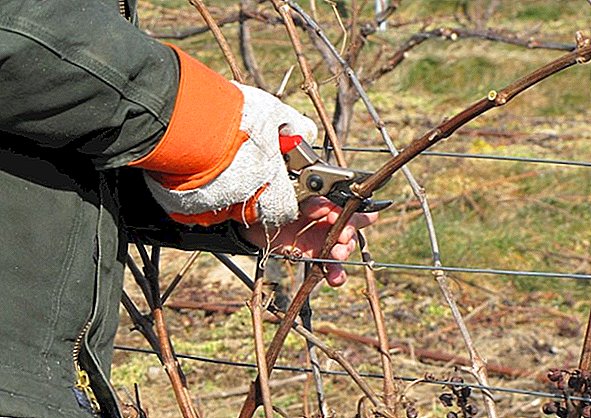
Important! For pruning grapes need to pick up a saw with small teeth and a thin blade. Such a saw will not loosen, and the process of cutting will be much easier. With the help of a saw, you can easily cut off all thick branches and prepare cuttings for future planting.
Rules for pruning grapes in spring
Crop of young grapes is carried out in compliance with several basic rules to avoid common mistakes:
- Be sure to remove all damaged, frostbitten and diseased branches. Even if the trimming scheme they should remain on the bush.
- Spring pruning grapes produced only clean and sharp tools. There should be no burrs and splits on the cut. Ideally, the cut should be smooth and even.
- The cut should be carried out at a right angle, without bevels.
- Do not leave long shoots, 10-12 eyes are enough.
- For replacement retain shoots that are closer to the stem.
- For fruiting choose a healthy vine with a diameter of not less than 6 mm.

Did you know? The vine can grow over a hundred years.
How to form a vine in spring
Under natural conditions, the vine of the grapes always strives for light and stretches upwards, clinging with its antennae to any support. Thus, the plant grows completely out of control. When growing grapes on your land, you need to know how to properly form a grapevine.
The proper formation of the vine - This is a guarantee of a good harvest. In order for the vine to acquire the correct shape, the seedling head must be placed slightly below the level of the soil. In the second year of grape growth in spring, the sapling should be cut, leaving at least half of it. Leave on the bush two shoots with three to five eyes. In the spring, in the third year of grape growth, four shoots must be left. The outer ones are cut to 60 cm, and the inner ones to 40 cm in length, and then tied to the wire in the form of a fan. From such shoots are obtained "sleeves" of the bush, which will soon start up new processes. These processes need to break off, leaving the top three intact. In subsequent years, during the formation of a grape bush in the spring, on each “sleeve” (shoot) it is necessary to leave a fruit link (arrow and knot of substitution).
Important! The main rule for the formation of a grape bush is the obligatory removal of excess shoots. So you can regulate the correct growth of the bush and control the volume of the crop.
Standard shaping
The correct boom shaping should correspond to a certain age of the plant. 
- 1 year. At this age, the grapes are cut on 2 eyes for the growth of two shoots. All other shoots can be cut.
- 2 years. The main shoot is preserved, which is shortened by 2-3 eyes. This will serve as the basis for the booster. As a reserve, you can leave one shoot, which should be cut to two buds.
- 3 years. The shtamb is cut to the height you need. 2 upper shoots are preserved - “sleeves”, which are cut into 2 buds and tied to the wire. Before you form a grapevine, you can leave 2 spare shoots. One shoot is cut by two buds (replacement mote), and the second by 5-6 buds.
- 4 years. At this age, the grapes are cut off the top "sleeves" and excess shoots, which allows you to form a bush in the way you want.
- 5 years. All excess shoots are cut off. Only the basic ones that form the fruit link are saved.
- 6 years. For the formation of the fruit link, the knot of substitution is cut by 2 buds, and the fruit arrow is cut by 7-8 eyes. As a rule, at this age, 2 fruit links are formed on single-row plantings and 4 links on double rows.
Shaftless Shaper
The no-shtamp forming of grapes depends on the age of the plant. Each age corresponds to a specific procedure. 
- 1 year. The formation of a grape bush from the first year begins with clarification. In this procedure, all diseased, deformed and dry parts of the plant are removed. Young shoots are cut 2-3 centimeters above the lower eye. It is also necessary to remove up to 90% of all young growth. All this contributes to the proper development of the plant in the next year.
- 2 years. In two-year bushes need to cut 60% of all young shoots. As a rule, leave 2-3 strong sleeves, shortened to 2 peepholes.
- 3 years. At this age, fruit units form at the plant. The knot of substitution (lower vine) is shortened by several buds, and the fruit arrow (upper part) is shortened by 7-14 buds. Thus, the correct sleeve is formed. Each sleeve should have 2 vines, and all others can be cut.
Grapes - a universal garden crop, which allows you to provide a variety of healthy and tasty products: juice, wine, raisins, and so on. Show due care, and you will certainly be satisfied with the results of their labors.


